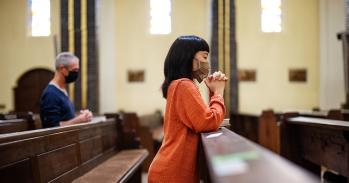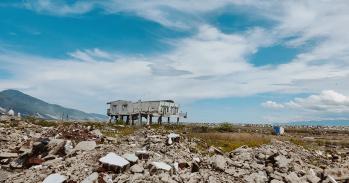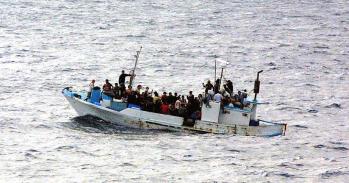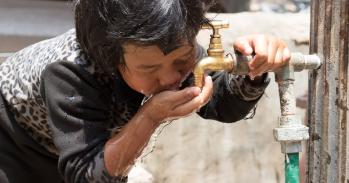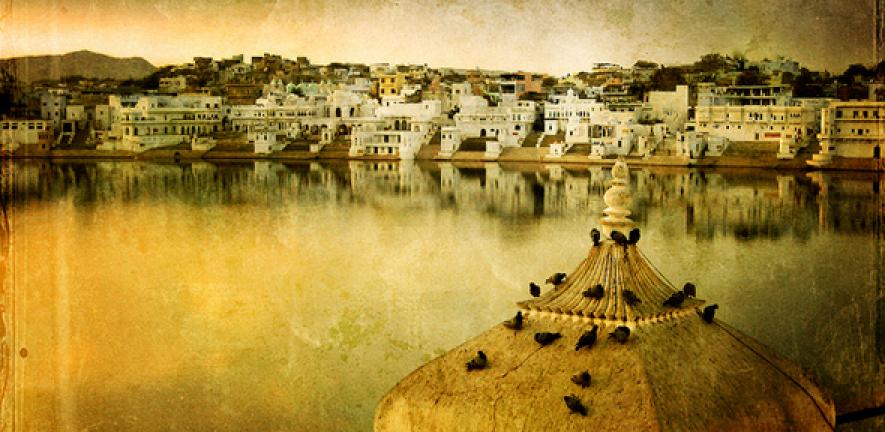
The Centre of South Asian Studies fosters a vibrant University-wide research community whose interests span the societies of India, Pakistan, Bangladesh, Sri Lanka, Thailand, Malaysia, Singapore and Indonesia.
The Centre of South Asian Studies fosters a vibrant University-wide research community whose interests span the societies of India, Pakistan, Bangladesh, Sri Lanka, Thailand, Malaysia, Singapore and Indonesia.
The research interests of academics linked through the Centre encompass South Asia’s past, present and potential future.
Professor Chris Bayly
South and Southeast Asia command an increasingly prominent position on the world stage and research that focuses on the region has broadened hand-in-hand with its rising significance.
‘Not only is India one of the world’s largest economies, but current predictions indicate that, by 2030, South Asia will overtake China to become the largest human population anywhere on the globe,’ explains Professor Sir Christopher Bayly, Director of Cambridge’s Centre of South Asian Studies. ‘The research portfolio of the Centre’s cross-disciplinary community reflects both the long-term and the widening interest in the region.’
Today, the Centre provides a focus for more than 50 academics and postdoctoral researchers and hundreds of students spread across the humanities and social sciences departments of the University.
As well as organising regular seminars and public lectures, the Centre houses one of the best libraries, archives and film collections of South Asian material in Europe (see panel). It has also recently become the base for a new MPhil in Modern South Asian studies, which ranges from business management and development economics, through history and politics to the study of the Hindi and Urdu languages.
‘Broadly speaking, the research interests of academics linked through the Centre encompass South Asia’s past, present and potential future,’ says Professor Bayly. ‘Colonial history is vitally important for understanding the region’s present, but scholars are also looking beyond this period at the origins of the paths of development taken by these different nations and the processes that will continue to shape their, and our, future.’
Migration and religion
A defining moment in South Asian history that continues to have ramifications today was the 1947 Partition of the subcontinent, which created India and Pakistan and led to the displacement of millions of people.
Dr Joya Chatterji, from the Faculty of History, has been investigating what happened to the resulting wave of migrants. This large-scale study, which was carried out in collaboration with the London School of Economics, has found some unexpected answers.
‘One might have expected the highly skilled to have moved to the West but in fact they tended to migrate to the cities of the newly formed countries of India and Pakistan,’ she explains. ‘Similarly, the working class might have been expected to stay in South Asia but many sought work in the UK, hoping to continue the work they had been doing under British rule.’ She suggests that patterns of migration and settlement are shaped by the particular grouping of skills, assets and networks that a person might have – their ‘mobility capital’ – with people of a similar grouping tending to move in similar directions.
The population exchange that occurred during Partition resulted in the Muslim majority state of Pakistan. The work of Dr Humeira Iqtidar, research fellow at the Centre, is providing new understanding of the emerging trends, misconceptions and long-term impact of Muslim politics. Over many months of fieldwork, her research has resulted in an in-depth analysis of the highly influential Islamist party Jama‘at-e-Islami and the more militant and little-studied Jama‘at-ud-Da‘wa, widely blamed for the November 2008 terrorist attack in Mumbai, India.
One particularly illuminating discovery was the finding that the Islamists, despite being vehemently opposed to the project of secularism, are inadvertently facilitating the process of secularisation. ‘By forcing a critical questioning about the place of religion in public and private life in societies that did not need to engage with these questions previously,’ she explains, ‘the Islamists are facilitating the emergence of objectified, rationalised religious belief.’
Also studying religious identity is Dr Philippa Williams, Smuts Research Fellow in Commonwealth Studies at the Centre. Her research has taken her to Varanasi, Uttar Pradesh. Here, in one of India’s sacred Hindu cities, she has carried out in-depth research into the experiences of the community to understand how ‘everyday peace’ is constructed and reproduced between the Hindu majority and the Muslim minority.
Rather than perpetual inter-community violence, she finds that their everyday life is characterised by a ‘peaceful’ but not perfect coexistence: ‘The Muslim community has taken a pragmatic approach, often devising their own mechanisms of citizenship, which represent both their resilience and acceptance in the face of a perceived lack of national citizenship. The net result is that tensions and conflict that might once have led to violence are actively avoided and averted.’
Shaping identities
To understand the particular paths of development of South Asian nations, several scholars are focusing on the ideas and political thought that have shaped their identities.
Dr Shruti Kapila, Lecturer in History, for instance, is interested in canonical figures such as Gandhi, and how he grappled with global ideas, but located them in the Indian context. She has also studied the radical anti-colonialist B. G. Tilak, who domesticated the idea of sacred violence in the subcontinent. Another fascinating figure is the 20th century’s ‘first terrorist’, Har Dayal, who led an armed revolution against the Empire in the 1910s and 1920s. Her work is shedding new light on the political formation of modern India, stressing the need to understand ideologies of violence as well as non-violence in its political transformation.
From a different perspective, Professor Bayly is exploring how features of public life in India today, including its vibrant democracy, derive in part from the inheritance of the South Asian liberal tradition. This tradition stretched from the Bengali reformer Rammohan Roy in the early 19th century, through to Dadabhai Naoroji, one-time MP for Finsbury in London, but has continued to influence major figures, including Jawaharlal Nehru, first Prime Minister of independent India.
‘Together, the vibrant mix of studies connected through the Centre is attempting to create an understanding of the whole of modern South Asia – explaining why these countries came to be how they are today and foreshadowing what might come next,’ explains Professor Bayly. ‘But perhaps above all, the Centre illustrates the continuing vitality of the connection between Britain and the countries of South and Southeast Asia.’
South Asian treasure chest
A unique archive at the Centre of South Asian Studies affords a precious personal insight into the days of the British Raj and after.
The cinefilms, papers, photographs, films, diaries and accounts books that make up the archive are the result of a unique collection process that began in the 1960s. For over two decades, the Centre’s first archivist, Mary Thatcher, travelled around Britain, visiting the families of those who had lived and worked in India during the final years of British rule, and collecting the ephemera that people brought home.
The resulting archive provides a fascinating and personal insight into the period of British rule and the early years of independence. Its holdings are both eclectic and rare: from unique footage of the chaos surrounding the Partition of British India to the beautifully illustrated journal of Miss Millicent Pilkington, who travelled around India in the 1890s; and from photographs of the planning and building of New Delhi to a recording of the surviving target of a would-be assassin.
To enhance the collection yet further, some donors were asked to write retrospective memoirs after the material was initially collected, and a large oral history project comprising 400 interviews was begun.
The film and oral history collections have recently been made available online, so researchers from around the world can now have easy, free access to a treasure chest of information and material from one of the world’s most significant South Asian collections.
For more information, please contact Dr Kevin Greenbank (kmg23@cam.ac.uk).
This work is licensed under a Creative Commons Licence. If you use this content on your site please link back to this page.


